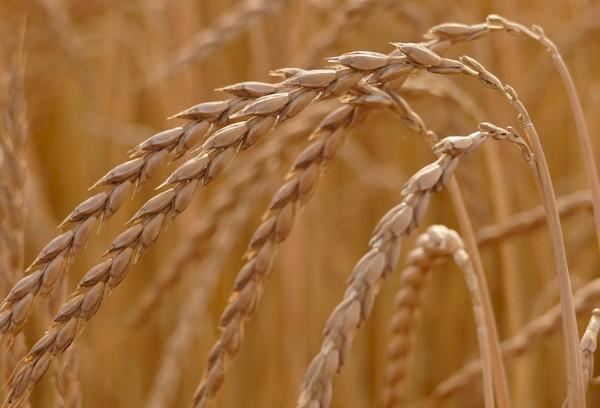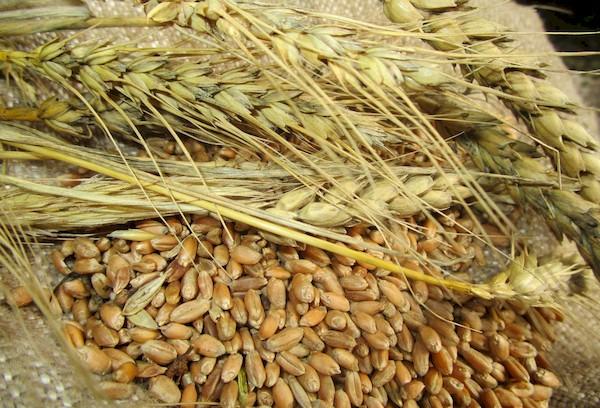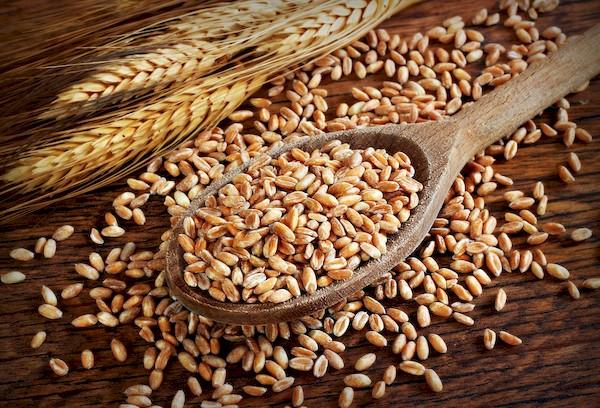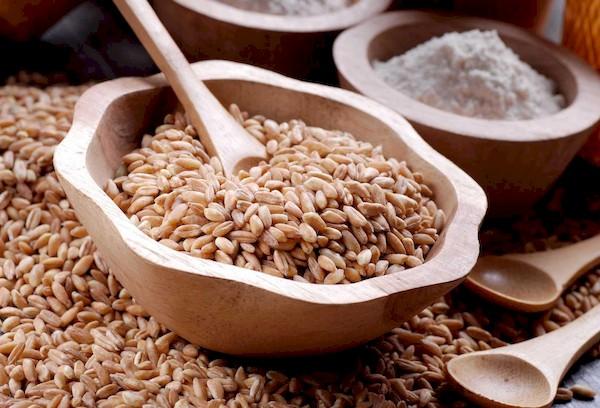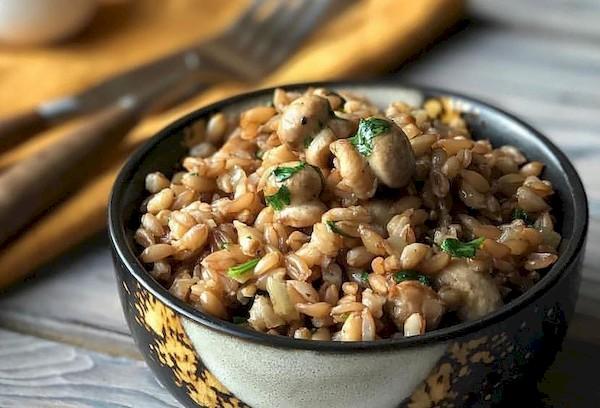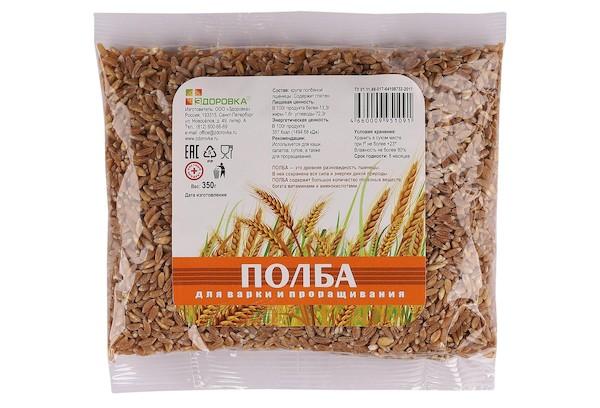Spelled: what is it and what is it made from, calorie content, nutritional value and beneficial properties
Spelled (in a number of sources – spelled wheat) is the name of a group of plants that are the “progenitors” of modern wheat. The crop is characterized by high fragility of the ears and a dense filmy coating of the grain. In addition to wheat, its “relative” can be called bulgur. But the difference between spelled and bulgur is that the latter is steamed and additionally dried.
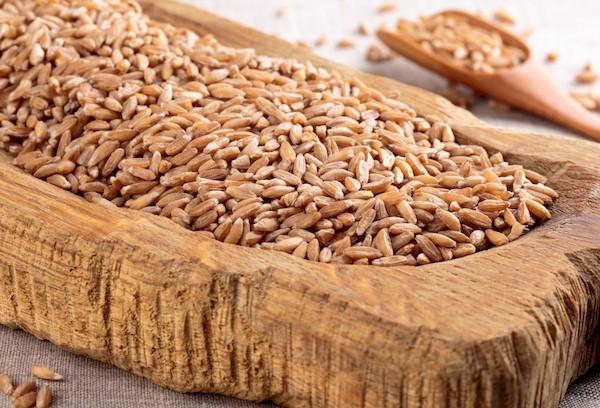
The crop is one of the most ancient cereals; mentions of it are found in the Bible and the Old Testament. Spelled was grown back in the 6-5 millennium BC in Ancient Egypt, Babylon, Armenia, and Asia Minor. Later it spread to the territory of modern Bulgaria, Sweden and Poland. It “reached” the lands that are now Russian (Volga-Kama region) only in the 5th–2nd centuries BC. e., and it did not become popular immediately, but only in the 18th century. Later, spelled was replaced by more productive varieties of durum wheat, and until recently, only a few ordinary people knew what it was. And in our time, thanks to the popularization of healthy eating, this culture has again begun to be in demand.
What is spelled made from?
The spelled group includes both wild and cultivated types of wheat. They are united by unpretentiousness, early ripening, resistance to diseases and the characteristic reddish-red color of the grain. So, spelled is made from the following varieties of wheat:
- two-grained;
- Boeotian;
- "Urartu";
- einkorn;
- einkorn;
- spelled.
The first 3 varieties are considered wild, the rest are cultivated. Both of them are distinguished by the unusual taste of the finished product. Thus, the cereal leaves a slight nutty aftertaste and has characteristic notes in the aroma, due to which it is only vaguely similar to the smell of most cereals.
Another feature of spelled wheat is that it can only be grown in environmentally safe areas. All parts of the plant are very susceptible to chemicals and are capable of accumulating them. For this reason, agronomists refuse to use fertilizers when cultivating spelled.
What is contained in 100 grams of spelled
Spelled, unlike more modern varieties of wheat and a number of other cereals, cannot be crossed with other crops. This means that the plant has retained its rich composition in its original form.
Regardless of what cereal, wild or cultivated, spelled cereal is obtained from, it contains the following useful elements:
- amino acids;
- B vitamins;
- vitamin K;
- vitamin PP;
- cellulose;
- iron;
- calcium;
- magnesium;
- sodium;
- selenium;
- phosphorus;
- zinc.
The energy value of spelled is 286.9 kcal per 100 g, the content of proteins, fats and carbohydrates is 11/2.3/50.3 g, respectively.
The product brings considerable benefits to humans, being, in a certain sense, a “super food”. Regular consumption of spelled allows you to saturate the body with substances necessary for normal functioning, improve digestion, reduce the level of “bad” cholesterol in the blood, normalize metabolic processes and protect internal organs, skin and hair from toxins.
However, there is no food that would be beneficial to everyone without exception.Since spelled is rich in gluten, it should not be included in the diet of people suffering from celiac disease or individual intolerance to the product.
Types of spelled cereals
Spelled varieties are divided into membranous and gymnospermous. The latter variety was developed relatively recently - its peculiarity is that the grains are easier to separate from the shells. Due to this, such raw materials are easier to process, and their integrity is not compromised during the threshing process.
There is also a known spelled variety called “wheat from Garfagnano”, named after the region in northwestern Tuscany. In essence, this variety is Einkorn.
Spelled comes on sale in the form of whole grains, crushed cereals, flakes and flour. It is the grains that are considered the most useful, since they undergo less intensive processing and, therefore, retain all the beneficial properties of the cereal.
What is prepared from spelled: 10 popular dishes
Considering what spelled is made from, it becomes clear that it can be used in cooking in almost the same way as “regular” wheat. So, based on the product they prepare:
- meat and vegetable soups;
- stews;
- porridge with milk and water;
- side dishes for meat, poultry and fish;
- casseroles;
- salads;
- sauces;
- baking;
- Dessert;
- nutritious snack mixtures when spelled flakes are added to kefir or yogurt.
When preparing baked goods, it is worth considering that spelled flour cannot completely replace wheat flour due to the small amount of gluten in the composition. In this case, the dough will be sticky, will not rise and will not bake. That’s why cooks use a combined option: they take flour in the proportions of 1 part spelled to 2 or 3 parts wheat.
How to choose quality spelled in a store
When buying spelled, it is better to choose a product in transparent packaging - this way you can evaluate the appearance and condition of the grain. High-quality cereal has the following characteristics:
- amber grain color;
- absence of foreign impurities and traces of insects;
- homogeneous content composition.
In addition, you need to pay attention to the integrity of the packaging and look at the expiration date. As a rule, it is 12 months. The quality of cereals, which the manufacturer allows to be stored longer, is very doubtful.
After purchasing, the spelled should not be left in a bag or box, but poured into a tightly closed container, preferably glass. A clove of garlic, lemon peel or bay leaf placed at the bottom of the container will help prevent the appearance of bugs. Supplies should be stored in a dark and dry place, at temperatures up to 20 degrees. Some housewives keep spelled in the refrigerator.
What is the difference between spelled and wheat?
Having understood in detail what spelled is, it is easy to understand how it differs from modern wheat varieties. The differences lie in the following criteria:
- appearance of spikelets – spelled wheat looks more like rye;
- a denser film on the grain - in some varieties of spelled they are covered not with one, but with several film layers;
- high resistance to diseases and pests - unlike wheat, spelled is not susceptible to infections and attacks by parasites;
- grain color - in wheat they are less bright;
- taste – spelled porridge vaguely resembles pearl barley, and also has unique “nutty” notes.
In addition, whole-grain spelled cereal requires a long soaking, from 4 to 8 hours, before cooking, while wheat does not require such a long preparation.
